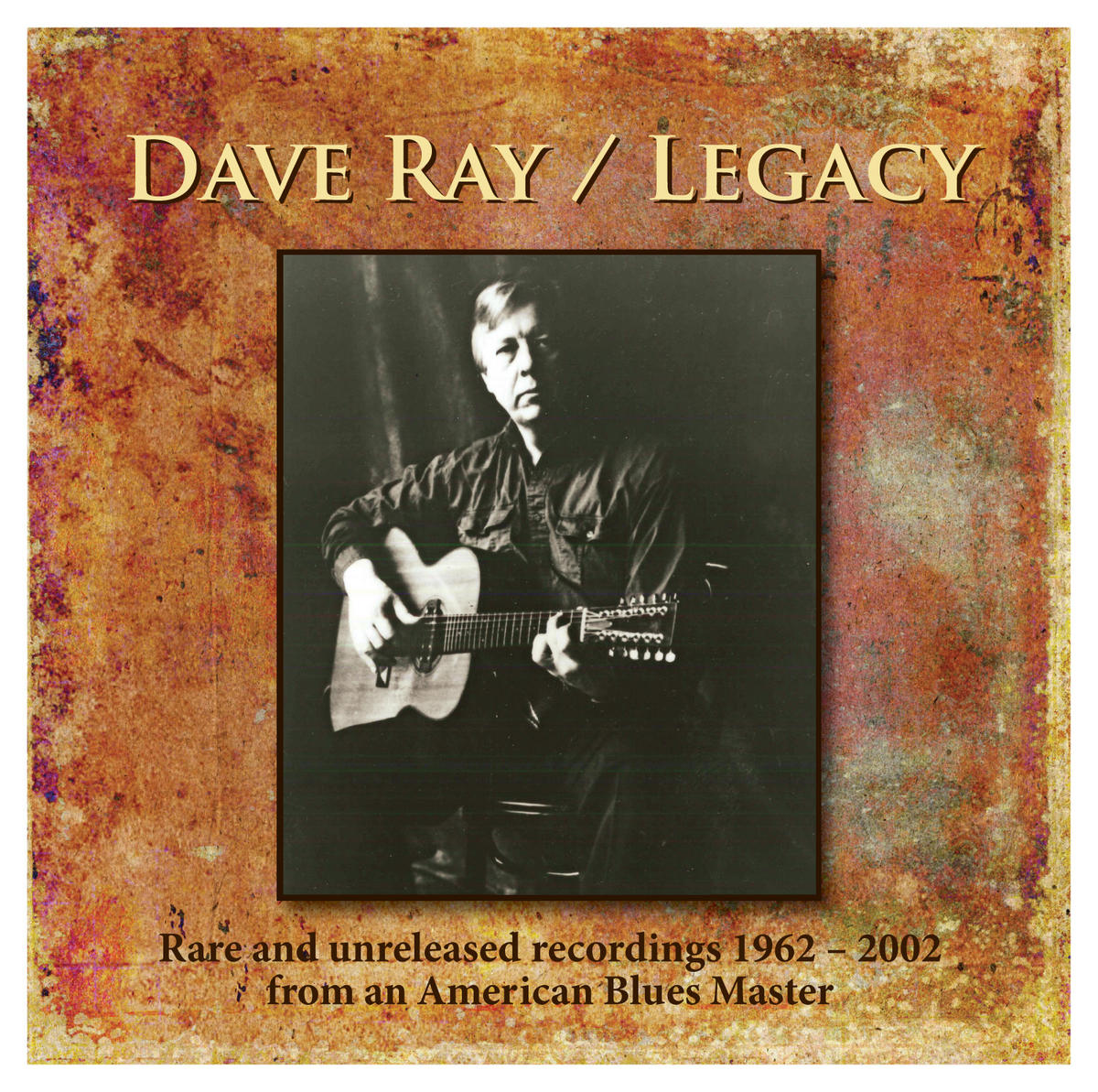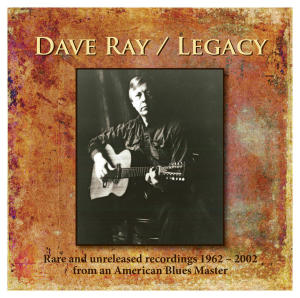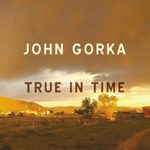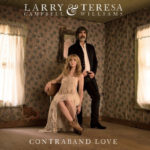Artist: Dave Ray
Album: Legacy
Label: Red House Records
Release Date: 10/27/2014

 Most of us, if we’re familiar with Dave Ray at all, know him through the Minnesota-based blues trio of Koerner, Ray and Glover from the 60s. So, digging into this 3-disc set of mostly previously unreleased solo and duo material is a discovery unto itself. Thankfully, we have the richly detailed, thoroughly and knowingly rendered 32-page liner notes, by harmonica partner Tony Glover, to guide us. The music spans four decades, beginning in 1962. At that time, other than John Hammond, Roy Book Binder, Dave Van Ronk, Bob Dylan, and perhaps a few others, there were very few white folks who were studying and interpreting the early blues of the 20s, 30s, and 40s from the original blues masters. Ray was courageous enough to take this on, and his unbridled intensity comes across, even in the low fidelity of takes from old analog reel-to-reel, cassette, live concerts, and radio broadcasts.
Most of us, if we’re familiar with Dave Ray at all, know him through the Minnesota-based blues trio of Koerner, Ray and Glover from the 60s. So, digging into this 3-disc set of mostly previously unreleased solo and duo material is a discovery unto itself. Thankfully, we have the richly detailed, thoroughly and knowingly rendered 32-page liner notes, by harmonica partner Tony Glover, to guide us. The music spans four decades, beginning in 1962. At that time, other than John Hammond, Roy Book Binder, Dave Van Ronk, Bob Dylan, and perhaps a few others, there were very few white folks who were studying and interpreting the early blues of the 20s, 30s, and 40s from the original blues masters. Ray was courageous enough to take this on, and his unbridled intensity comes across, even in the low fidelity of takes from old analog reel-to-reel, cassette, live concerts, and radio broadcasts.
The well-organized, 55-track collection starts with Disc 1, primarily solo recordings from 1962 to 1987. Ray was clearly an ardent disciple of Leadbelly, but the 16 tracks also cover Leroy Carr, Brownie McGhee, Skip James, Sleepy John Estes, Muddy Waters, and Blind Blake as well as a couple of originals. Of particular note are Ray’s own “Hot Rod Terraplane,” an extended live version of “Frankie and Albert,” and his unique version of Fenton Robinson’s “Loan Me a Dime.” Disc 2 features clearer sounding duos with Tony Glover, recorded between 1988 and 1994. Again he covers a variety of blues artists in the 21 tracks, accented by Jimmy Reed’s “Take Out Some Insurance” and Fred McDowell’s “You Got to Move.” Disc 3, understandably the best sounding collection, covers from 1995 to Ray’s death in 2002. His vocals here are more relaxed, mature, and intimate. Outstanding covers of Percy Mayfield, Percy Sledge, Bobby Womack, and Big Bill Broonzy display the range of Ray’s encyclopedic knowledge of not only blues but R&B and soul.
Tony Glover has done a masterful job of documenting an artist who was not nearly widely enough recognized during his lifetime. Like too many musicians, Ray never made much money. He played simply for the love of the music and to importantly, educate his audiences. Now it’s our turn to dig in.
– Jim Hynes







Be the first to comment!